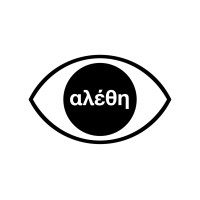Paleoanthropology, the study of ancient humans, continually revises our understanding of what makes Homo sapiens unique. Initially, the faculty of ‘language’ was thought to be exclusive to modern humans. This view expanded to include Neanderthals as new evidence came to light. Now, even Homo erectus, our ancient ancestor, is considered to have had this capacity. This progressive reevaluation suggests a fundamental shift in how we understand language, a trait that might set our entire genus apart from other apes.
Traditional perspectives have often portrayed language as a precursor to, and facilitator of, complex social cooperation, suggesting that the ability to communicate complex ideas was what allowed human societies to flourish. However, the attribution of language to ever more ancient types of humans—who lived an arguably more isolated existence for very long periods of time—questions the transformative powers of this communicative trait.
Indeed, the ability to produce speech or other elaborate signals cannot, by itself, produce a human society. There is nothing in those signals that causes receivers to come together around them. As I have explained, the key to the evolution of language, and human evolution generally, is in the human ability to motivate receivers to engage with signallers, rather than letting them go about the environment, away from ‘society’.
The Prescriptive Nature of Language
Prescription, in the context of human communication, refers to the intentional and purposeful act of making others respond to our signals.
Human-dog interactions offer a compelling illustration of this concept. Consider a scenario where a dog communicates its desire for food through barking and gazing between you and the desired item. The dog does not have an intention that we respond to its signals; its focus is merely on obtaining the food and the fact that you can help. In contrast, humans motivate the receiver (in this case, the dog) through incentives or consequences for not responding. As a result, dogs appear very keen and receptive to our signs and commands.
This conscious, strategic aspect of human signalling marks a critical divergence from the signalling behaviours of other species, besides explaining the seeming paradox of our “self-domestication”. Prescription challenges the notion that “language”—understood as speech or something like speech—led to human-style or large-scale cooperation. Instead, it suggests the complete opposite: language is a consequence, not a cause, of human cooperation, because increased cooperation must be established before more elaborate or sophisticated signals can evolve.
Communication is always a form of cooperation. In humans, the signaller needs to get the receiver especially interested in its signals, so that it will bother to interpret them, let alone respond appropriately. Only then, can signalling become more elaborate or sophisticated, and more meanings can be introduced. In other animals, this is not possible because receivers have no incentive to be receptive to new meanings. This explains the dramatic difference between the signalling repertoire of humans and that of other animals.
